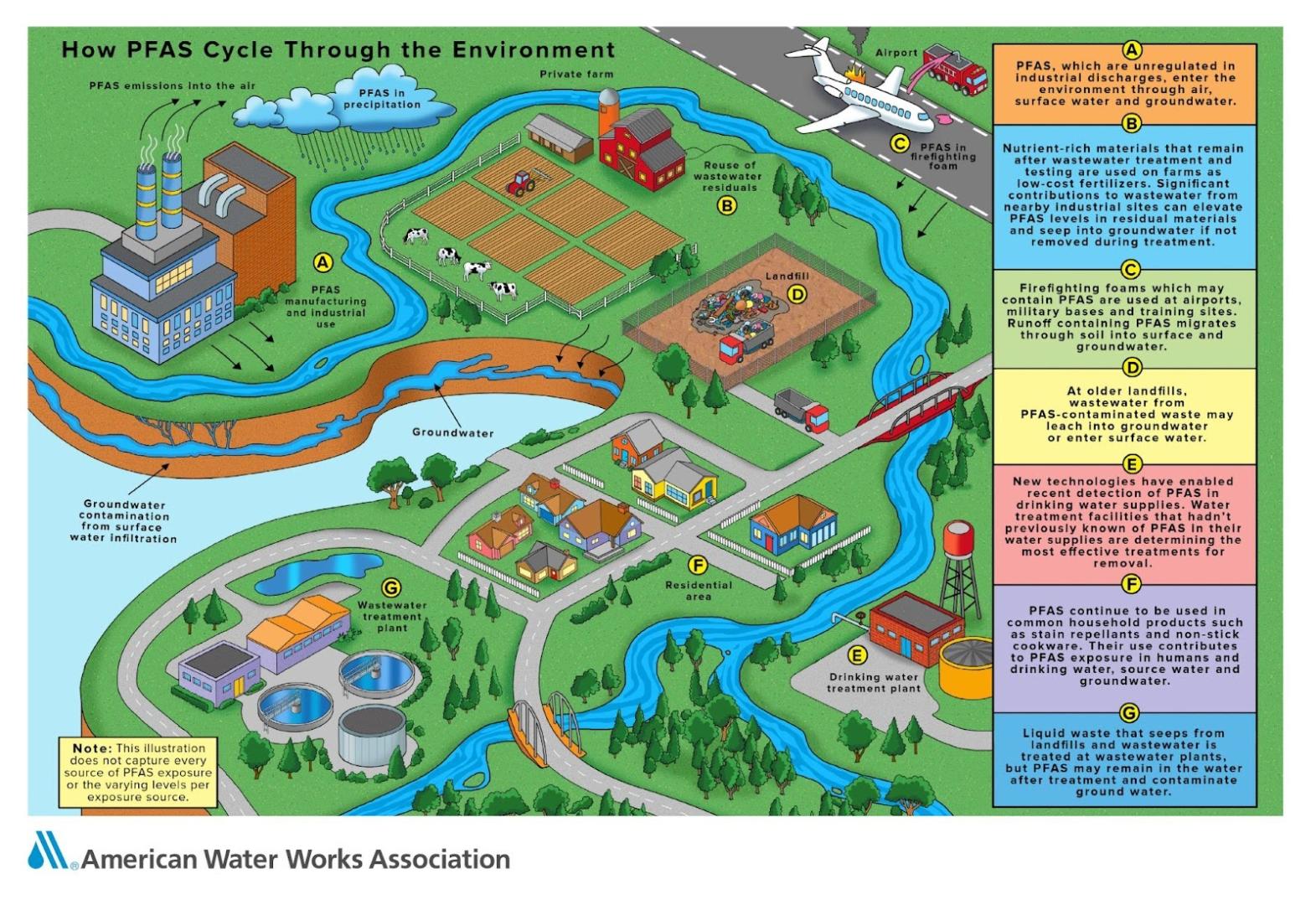Anne Arundel County’s drinking water remains safe and protected from contaminants, including the group of man-made chemicals labeled PFAS (per- and polyfluoroalkyl substances).
PFAS are manufactured for a variety of industrial purposes. If detected in drinking water, PFAS have the potential to create adverse effects to human health.
DPW officials know this is a growing concern and will comply with the Environmental Protection Agency (EPA) requirements expected to be released this year. While our testing to date has found no contaminant levels in water leaving our treatment plants, we are positioning ourselves to have proactive and protective strategies in place should these contaminants become detected in the future.
Frequently Asked Questions about PFAS
PFAS, often referred to as forever chemicals, are a group of thousands of man made compounds – called per- and polyfluoroalkyl substances – that have been in use since the 1940s in common household and commercial products.
They are resistant to heat, stains, and water making them popular additions to cookware, clothing, carpets, cosmetics, and furniture. PFAS are also found in millions of other goods, including products you may have never imagined like dental floss, cake mix, cardboard straws, and toilet paper. The EPA estimates that 80% of a person’s exposure is from consumer products.
Our water treatment plants do not produce or use PFAS. However, PFAS can end up in source water and then drinking water due to continued manufacturing and use of PFAS-laden products.
For example, PFAS are still used with nonstick cookware. Scraping and washing a nonstick pan with PFAS discharges the compounds into our wastewater system.
Because of their resistant properties, PFAS can move through the conventional water treatment processes largely intact.

PFAS have adverse health effects on humans; however, the research isn't fully conclusive at this time. The Agency for Toxic Substances and Disease Registry (ATSDR) has identified the following health effects as potential outcomes from exposure to PFAS:
- Changes in cholesterol and liver enzyme levels
- Small changes in infant birth weight
- Changes in the immune system and response to certain vaccines
- Increased risk of preeclampsia or high blood pressure in pregnant women
- Increased risk of certain cancers (i.e., kidney and testicular)
Reducing your exposure to PFAS in combination with healthy lifestyle habits can reduce the risk of these and other adverse health outcomes. If you have concerns about these or other health effects, you should first have a conversation with your physician.
- How to better and more efficiently detect and measure PFAS in our air, water, soil, and fish and wildlife
- How much people are exposed to PFAS
- How harmful PFAS are to people and the environment
- How to remove PFAS from drinking water
- How to manage and dispose of PFAS
DPW supplies safe, clean and reliable water to the residents and businesses of Anne Arundel County. We are proud to meet and exceed all regulations for water quality and remain committed to continuing this exceptional level of excellence.
When the EPA’s proposed drinking water standards are finalized this year, DPW will evaluate the final standards to determine if treatment process changes are necessary.
DPW has proactively tested for PFAS compounds in our drinking water, testing that went above and beyond federal and state requirements. DPW monitors for 29 PFAS compounds that are included under the EPA’s Fifth Unregulated Contaminant Monitoring Rule, also known as UCMR5. UMCR 5 testing is intended to give the EPA and water providers a greater understanding of how pervasive PFAS are in our nation’s drinking water. DPW will review our UCMR5 test results to determine if additional courses of action are necessary.
Each year, as required by the EPA, Anne Arundel County also produces a Drinking Water Quality Report that provides data to the public that includes what, if any, contaminants that were detected through its continuous testing program. This information can be viewed on the Drinking Water Quality Report webpage.
Avoid buying non-stick cookware and stain-resistant furniture and carpeting containing PFAS. Look for ‘fluoro’ or ‘perfluoro’ in a list of ingredients or ask the manufacturer.
Limit eating foods packed in materials that use PFAS, like microwave popcorn bags, fast food boxes and bakery bags.
And avoid personal care products with PFAS, including certain dental floss, nail polish, facial moisturizers and cosmetics. Limiting the use of products containing PFAS will help protect drinking water supplies.
Helpful Links
Because the EPA has established a health advisory for PFAS for long term exposure, we have provided the links below for more information about this issue.
